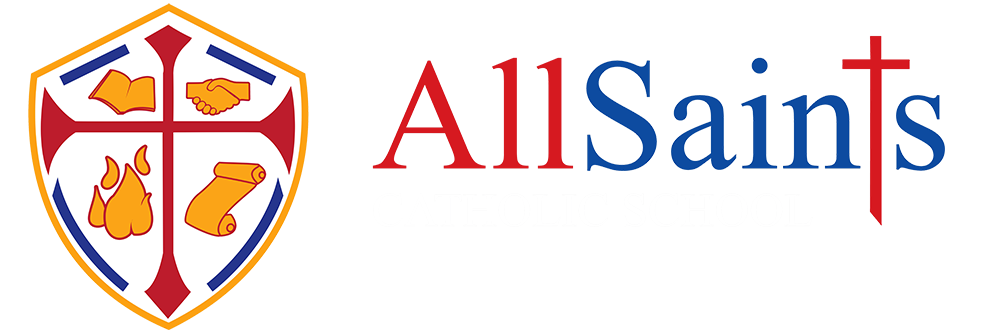Art
Key skills (subject specific) that are developed:
Art is vital in providing pupils with the opportunity to develop their creative and imaginative skills which can be used in a range of careers and hobbies. Art gives students the practical skills to communicate and express ideas, feelings and meanings in Art and Design. Art can also help students develop personal qualities such as confidence, initiative and resourcefulness, and allows students to understand the purpose of Art in contemporary society and in other times and cultures.
The skills pupils build throughout their Art experience at All Saints Catholic School
- Gain creative confidence & build courage with a variety of materials and processes
- Learn how to observe
- Trust in your own abilities
- Problem Solving
- Perseverance & Focus
- Non-Verbal Communication
- Receiving constructive feedback
- Developing team building skills as well as working independently.
- Organisational Skills
- Dedication
- Accountability
- Analytical skills
KS3
Summary
KS3 Pupils follow a balanced and creative course of study in which they develop a variety of skills based on observation and imagination. All pupils are encouraged to explore a range of media and techniques, including painting and drawing, mixed media, 3D and design work.
KS4
Summary
- AQA Art and Design Portfolio (60% Qualification). For this unit, students will produce a portfolio of work showing their personal response to a starting point. Students will hand in a portfolio and final images.
- AQA Art and Design set task (40 % Qualification). For this unit, Students will be given a selection of starting points to choose from and will produce a visual response during a 10 hour practical exam. Students will produce preparatory studies to support their exam work.
As a practical and visual subject the best thing students can do is to regularly visit galleries and exhibitions.
Galleries:
- Tate Modern
- Tate Britain
- The Royal Academy
- The Saatchi Gallery
- The Hayward Gallery
- The Serpentine Gallery
- The National Portrait Gallery
- Whitechapel Gallery
- The Barbican Centre
Useful websites:
https://www.bbc.co.uk/bitesize/subjects/z6hs34j
https://www.studentartguide.com/
https://www.pinterest.co.uk/studentartguide/beautiful-igcse-gcse-art/
https://www.aqa.org.uk/subjects/art-and-design/gcse/art-and-design-8201-8206
https://www.tate.org.uk/
https://artsandculture.google.com/
https://artuk.org/
https://www.bbc.com/culture/columns/art
https://www.dafont.com/
https://www.youtube.com/results?search_query=art+gcse+mind+ma
KS5
Summary
Component 1: 60% of total qualification (coursework)
This component allows students opportunities to generate and develop ideas, research primary and contextual sources, record practical and written observations, experiment with media and processes, and refine ideas towards producing personal resolved outcome(s).
- This incorporates three major elements: supporting studies (sketchbooks), practical work (large pieces) and a personal written study.
- The personal study will be evidenced through critical written communication showing contextual research and understanding in a minimum 1000 words of continuous prose, which may contain integrated images. The personal study comprises 12% of the total qualification and is marked out of 18
- Marks available :90
Component 2: 40% of total qualification (exam)
Externally set, assessed by the teacher and externally moderated.
- This incorporates two major elements: preparatory studies and the 15–hour period of sustained focus.
- Preparatory studies will comprise a portfolio of practical and written development work based on the Externally Set Assignment.
- During the 15–hour period of sustained focus under examination conditions, students will produce final outcome(s) extending from their preparatory studies in response to the Externally Set Assignment.
- The Externally Set Assignment is released on 1st February and contains a theme and suggested starting points.
Students have from 1st February until the commencement of the final 15–hour period of sustained focus to develop preparatory studies.
As a practical and visual subject the best thing students can do is to regularly visit galleries and exhibitions.
Galleries:
- Tate Modern
- Tate Britain
- The Royal Academy
- The Saatchi Gallery
- The Hayward Gallery
- The Serpentine Gallery
- The National Portrait Gallery
- Whitechapel Gallery
- The Barbican Centre
Useful websites:
https://www.bbc.co.uk/bitesize/subjects/z6hs34j
https://www.studentartguide.com/
https://www.pinterest.co.uk/studentartguide/beautiful-igcse-gcse-art/
https://www.aqa.org.uk/subjects/art-and-design/gcse/art-and-design-8201-8206
https://www.tate.org.uk/
https://artsandculture.google.com/
https://artuk.org/
https://www.bbc.com/culture/columns/art
https://www.dafont.com/
https://www.youtube.com/results?search_query=art+gcse+mind+map

